That’s where website quality assurance comes into play. In this post, I’ll explain the importance of quality assurance (QA), provide a practical checklist, and share insights from industry experts.
Table of Contents
- What is website quality assurance (QA)?
- Why is website QAing important?
- Website QA Benefits
- Website QA Testing vs. User Testing
- Website Quality Assurance Checklist
- Website QA Testing Tools
- Quality Testing My Website
What is website quality assurance (QA)?
Website quality assurance involves double-checking whether a website works as intended across multiple platforms and devices. The process involves applying specific techniques and completing certain tasks that test a website's functionality and ensure quality.
I asked Bryan Robinson, a 13th-year QA engineer, to explain quality assurance. He said, "quality assurance is the essential function in building your app; we ensure that the billion-dollar idea you have isn‘t dead on arrival by the time it’s in the customers' hands.”
Quality assurance covers many areas, such as feature verification, button functionality, data validation, error handling, etc. Robinson talked about how rigorous testing is essential to identify and rectify issues that could hinder user experience — things like broken links, slow loading times, or compatibility problems across different devices and browsers.
“When I‘m testing an app,” said Robinson, “it’s very important to me that the software functions as intended in the requirements and performs as expected under various conditions. A well-tested website enhances user satisfaction and builds trust and credibility, which are vital for customer retention and brand loyalty.”
While most organizations designate a QA engineer to oversee the site assurance process, various roles — including software developers, business analysts, UI designers, and project managers — are typically involved in achieving optimal website quality.
Why is website QAing important?
As a developer, quality assurance testing is essential for delivering a user-friendly experience. Imagine purchasing a car without knowing if it's safe or reliable. I don’t know about you, but this would not sit well with me. The same goes for software.
I reached out to Judicael Tombo, a java developer at Deloitte, who has often been responsible for both development and QA testing in his previous roles. He detailed the differences he experienced working for a company that prioritized quality assurance testing versus one that did not.
When I asked Tombo why website quality assurance is necessary, he explained that it’s not just about catching bugs: it’s about building a solid foundation for everything that comes next.
“When I worked at Carvana, thorough testing meant smooth customer experiences, minimal downtime, and much less developer stress. We could focus on creating instead of constantly fixing.”
When businesses don’t focus on quality assurance or have a structured testing plan, Tombo says this can lead to “technical debt piling up, frequent maintenance headaches, outages, and frustrated users.”
In contrast, Tombo said that good QA ensures customer reliability, makes life easier for developers, and saves businesses money in the long run. When done right, it’s a win for everyone involved.
Website QA Benefits
1. Increased Website Traffic
Being that search engines (SEO) prioritize optimized and accessible websites, proper QA testing can help your website rank higher in search engine results, driving more authentic traffic.
18.9% of America's population has a disability, so ensuring your website passes accessibility testing through a QA analysis can lead to positive conversions.
2. Reduced Development Costs
Identifying and fixing bugs early in the development process is significantly cheaper than doing so later. QA helps catch issues before they become significant problems.
AMC Bridge talks about how catching a bug in during the QA process can take about 5 hours to fix. However, catching in later stages can take an estimated 40 hours to fix. You multiply these numbers by your developer's hourly rate and see how costly avoiding quality assurance can be.
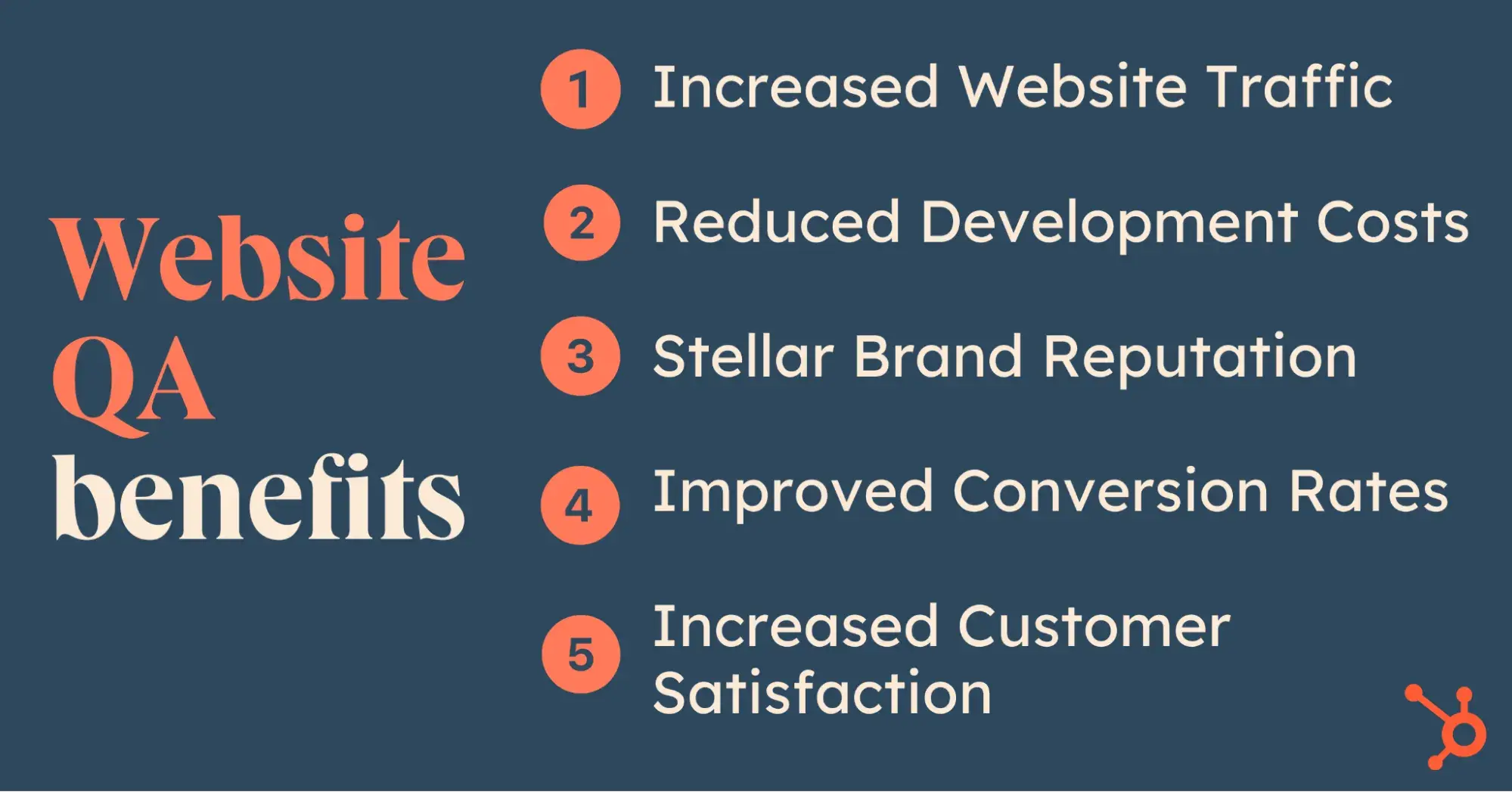
3. Stellar Brand Reputation
A website with frequent errors or crashes can damage your brand's reputation. Quality assurance helps maintain a professional and reliable online presence. Think about the recent Crowdstrike controversy — their brand took a massive blow due to the outage in July 2024.
4. Improved Conversion Rates
A website that is easy to navigate and error-free can lead to higher conversion rates, whether it's making a purchase, signing up for a newsletter, or contacting customer support.
5. Increased Customer Satisfaction
A well-functioning website that meets user expectations leads to higher customer satisfaction and loyalty. This undoubtedly will lead to a higher retention rate.
Website QA Testing vs. User Testing
I like to use the analogy of new home construction to differentiate QA testing from user testing.
The home inspector (QA engineer) focuses more on the home's structure, plumbing, and electrical wiring. They aim to ensure the house is functional, built according to the blueprint, and meets local coding standards.
On the other hand, the buyer (user) experience depends on whether the structure is sound. They aim to assess and determine if the house meets their needs and preferences and is comfortable and functional for their lifestyle. The potential buyer evaluates the house's layout, room sizes, lighting, and overall aesthetics.
This is very similar to QA and user testing.
Tombo says, “QA testing covers all types of tests, from unit and integration tests to end-to-end tests, ensuring that a product or service meets specified requirements and functions correctly. User testing, on the other hand, focuses on emulating real user interactions to assess the product’s usability and user satisfaction.”
Both are important to build an optimal, user-friendly website. However, their focus differs.
QA testing is typically done before the website or feature goes live and encompasses testing things like if the click of a button routes to a specific page or if payment processes correctly.
User testing is done after QA testing and involves a user being observed while they complete real-world tasks on the site. By analyzing their performance and feedback, teams can identify areas for improvement and enhance the product's usability.
“Choosing between [QA testing and user testing] depends on the scope, business needs, and available resources,” explains Tombo.
Pro tip: If you want to learn how your users interact with your site, I like this article that suggests ten usability testing tools to make your life easier.
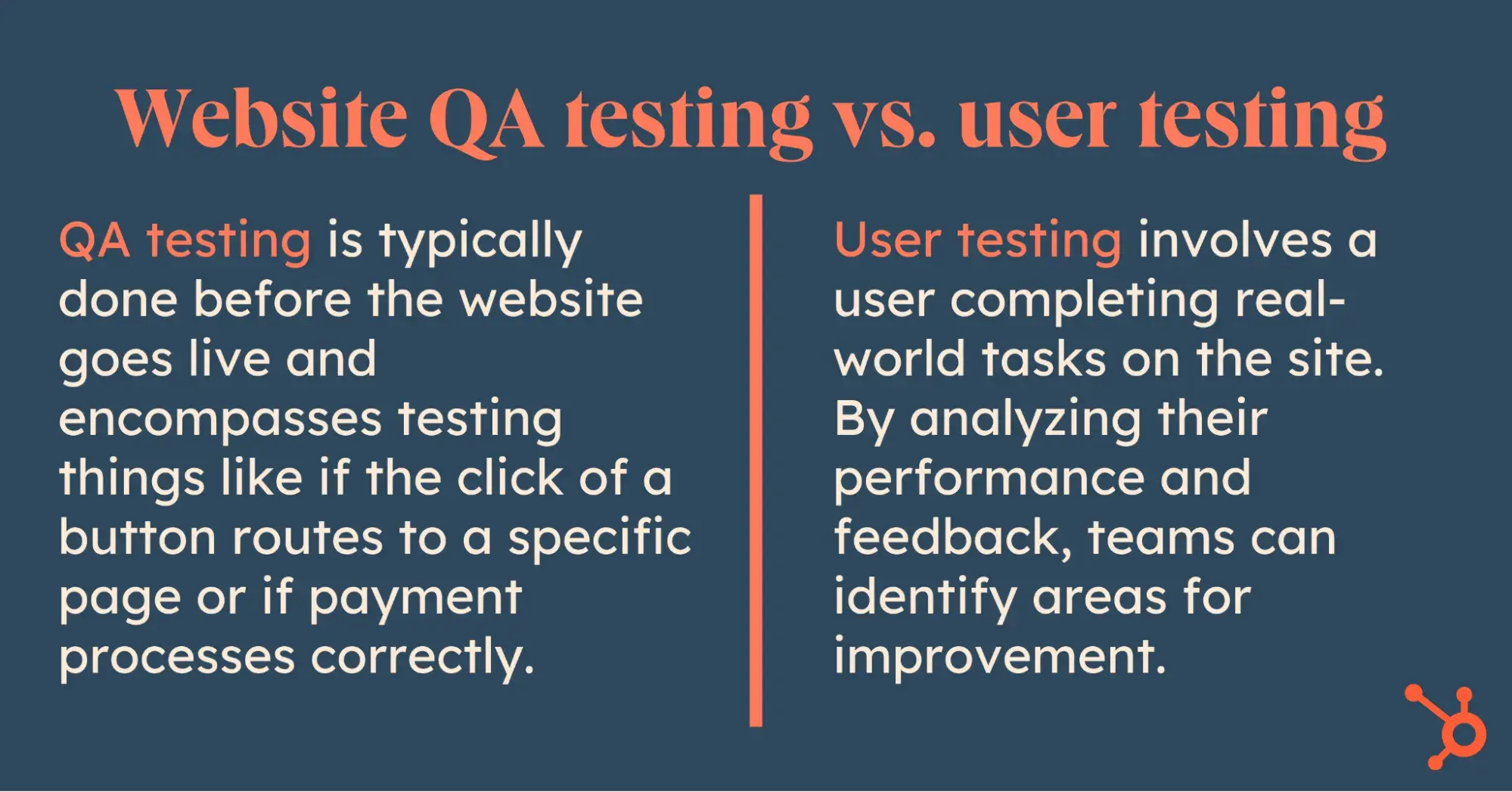
Website Quality Assurance Checklist
1. UI Testing
UI testing, also known as user interface testing, focuses on the part of the application the user interacts with. It ensures the UI is intuitive, aesthetically pleasing, and functions correctly.
A well-designed UI can dramatically improve user experience and increase user satisfaction and engagement.
How I test:
- Check for consistent branding and design elements.
- Verify font size, color, and spacing.
- Test loading times.
- Ensure images load correctly.
- Check for responsive design on different devices and screen sizes.
2. Content Audit
Conducting a content audit involves reviewing your website’s content for accuracy, relevance, and consistency. The goal is to ensure the content is compelling and appropriately conveys the message to connect with your target audience.
Ensuring that your content is high-quality can also improve SEO and user engagement.
How I test:
- Check for spelling and grammar errors.
- Verify content is up-to-date and relevant.
- Ensure content is consistent with the brand's voice and tone.
- Assess content for SEO optimization.
3. Functional Testing
Functional testing verifies that each function of the application works as intended. It guarantees that the application meets its specified requirements and performs as intended.
This type of testing is important because a broken feature, button, or link can lead to user frustration and lost conversions.
How I test:
- Click through all links and buttons.
- Test search functionality.
- Verify forms are submitted correctly.
- Verify the checkout process.
- Test user registration and login.
- Ensure error messages are clear and helpful.
4. Website Security
Website security involves assessing a website's vulnerabilities and implementing measures to protect it from cyber threats. This includes testing for common vulnerabilities like SQL injection and brute-force attacks.
A secure website protects sensitive user data, maintains user trust, and prevents financial loss. A compromised website can lead to data breaches, reputational damage, and legal consequences.
How I test:
- Check for SSL certificates.
- Test for vulnerabilities like SQL injection and cross-site scripting (XSS).
- Verify strong password policies.
- Ensure regular security updates.
Pro tip: Consider using a CMS that does website monitoring for you.
5. Accessibility
Accessibility testing is a process that ensures a website is usable by people with disabilities such as visual impairments, hearing impairments, motor impairments, and cognitive disabilities.
Prioritizing accessibility improves website inclusivity and compliance with accessibility standards. Not only is it a legal issue in many countries, but it is also morally responsible to ensure everyone can use your site or application.
How I test:
- Check for keyboard navigation.
- Verify screen reader compatibility.
- Ensure color contrast is sufficient.
- Test alternative text for images.
Pro tip: If you aren’t sure where to start with accessibility testing, I've got you covered. Check out this article that covers 22 accessibility tools you can use today.
6. Form Input and Validation
This type of testing involves testing the functionality of forms and input fields. Forms are among the most popular data collection methods, so they must function correctly.
How I test:
- Test required fields.
- Verify input validation such as email and date formats.
- Check error messages.
- Test form submission.
7. Link Testing
Link testing involves checking all hyperlinks on a website to ensure that they redirect users to the intended page.
This type of testing is important because SEO penalizes websites for broken links. Also, this may negatively impact a user's experience as they may not be able to achieve their purpose for visiting your site.
How I test:
- Click on internal and external links.
- Ensure links open in the correct target.
- Verify link redirects.
8. Mobile and Cross-Browser Responsiveness
Mobile and cross-browser responsiveness testing ensures a website displays and functions correctly across various devices, screen sizes, and browsers. This includes testing on different operating systems (e.g., iOS, Android, Windows) and browsers (e.g., Chrome, Firefox, Safari, Edge).
How I test:
- Test on different devices (phones, tablets, desktops).
- Use browser developer tools to simulate different screen sizes and resolutions.
- Check for any layout or content issues.
9. Scripts, Snippet Codes, Widgets, and Plugins
This testing ensures that any third-party scripts, code snippets, widgets, or plugins integrated into a website function correctly, aren’t outdated, and don’t conflict with other parts of the website.
How I test:
- Check for conflicts with other scripts.
- Monitor performance impact.
- Verify security implications.
10. API Response Testing
API response testing includes checking for accuracy, completeness, and performance of data received from external APIs. This includes checking the status codes, response headers, and the actual data returned.
By testing your APIs, you can identify and resolve issues that could impact the website's functionality and performance.
How I test:
- Verify response status codes.
- Check data accuracy and completeness.
- Test API performance and error handling.
11. Cookie Testing
Cookies are small text files stored on a user's computer by a web browser. They track user preferences, session information, and other data. Because cookies track information relative to a user, they must work correctly.
Cookie testing verifies that cookies are being set, read, and deleted correctly on a website.
How I test:
- Verify cookie creation and expiration.
- Check cookie values.
- Test cookie deletion.
Pro tip: If you’re uncomfortable testing in production, consider a tool like Sandbox that lets you QA in a test environment.
Website QA Testing Tools
There are several tools available to help you streamline your QA process.
Since he’s the expert, I asked Robinson to share a few of the tools he uses. Here’s what he said: “Some of the main tools I use are Postman for testing API responses, qtest for creating and managing all of my test cases, BrowserStack to test web app compatibility, and Microsoft SQL Server Data Tools for backend data validation.”
In this section, I’ll dive deeper into the tools that Robinson uses to accelerate his QA process.
1. Postman

Postman is a handy tool I use daily as a developer in my workflow. This tool is excellent for designing, building, and testing APIs.
I’ll show you how easy it is to test your API response with Postman. For this example, I am using a free public API from DataUSA.io.
To start a new test, click the New button.

Next, click HTTP which defines how data is communicated between a client and server.
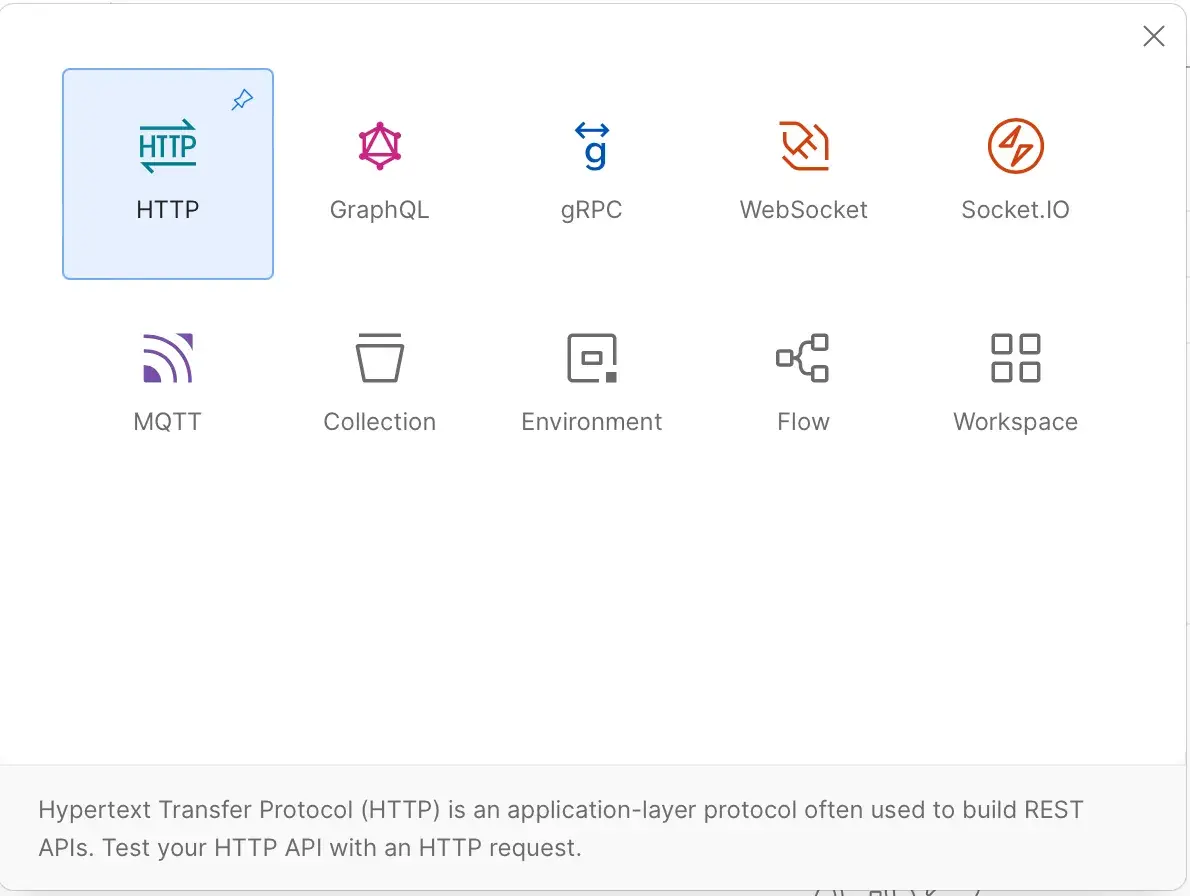
HTTP has several methods, but the most used are Get, Post, Put, and Delete. In this example, I am using the Get method. This means that I am requesting data from the DataUSA server.
To request the data from the server, I have to specify its digital address, also known as its URL.
I pasted the URL for DataUSA.io into the URL box. Pay attention to the specific words after the base URL. It directly targets a specific API endpoint, requesting population data for the entire nation from Data USA.
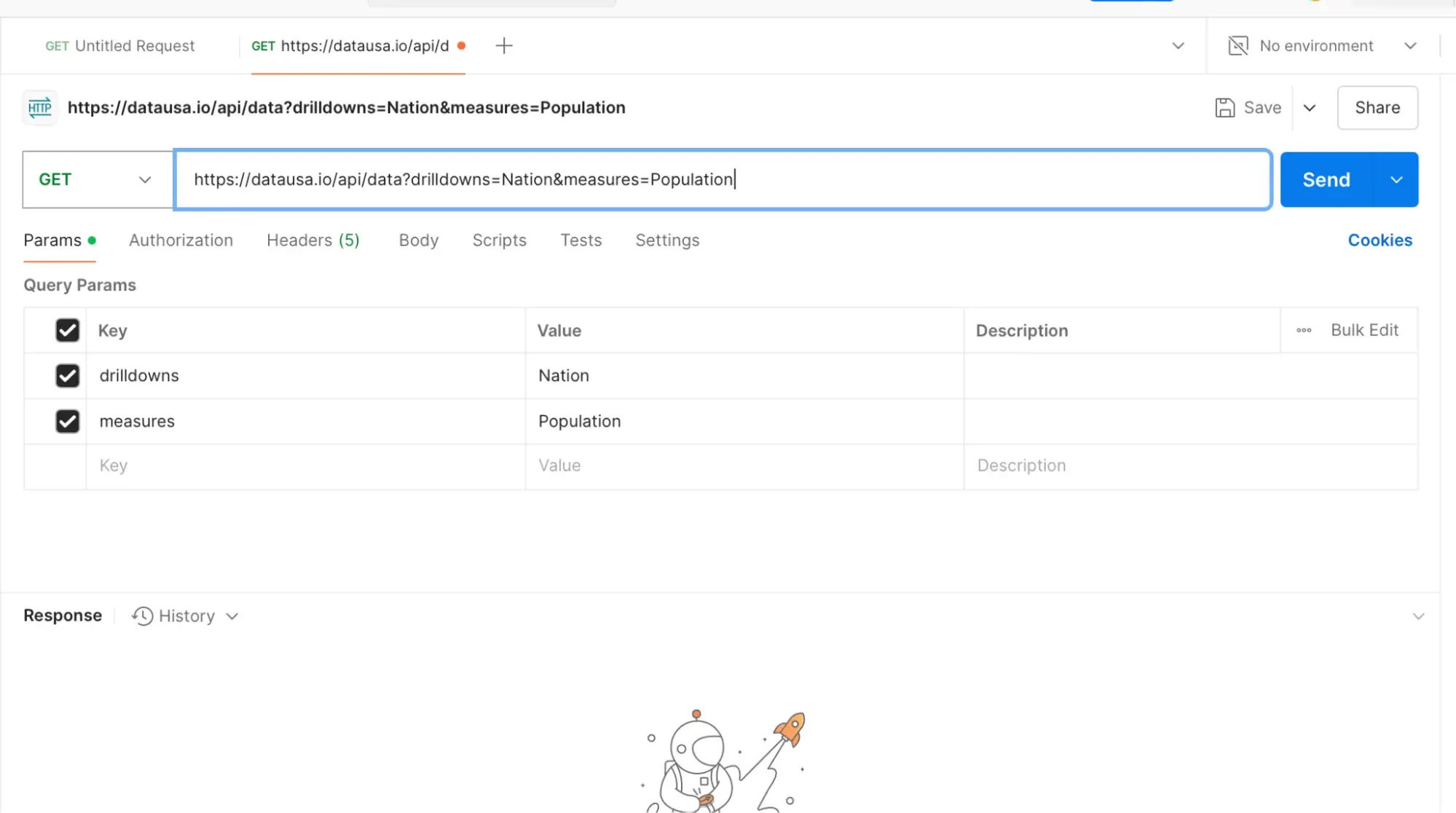
Once I hit send, I receive a 200 OK, which means the request is successful. I can see the expected data, such as the ID Nation, Nation, ID Year, etc.

It took me less than two minutes to test this API response. The good news is you can do the same for free.
Pricing: Postman has different packages, including a free plan perfect for a small team that only needs a limited number of requests. If you are on a larger team, consider one of their paid plans, which range from $14 (Basic) to $49 (Enterprise).
2. Tricentis qTest
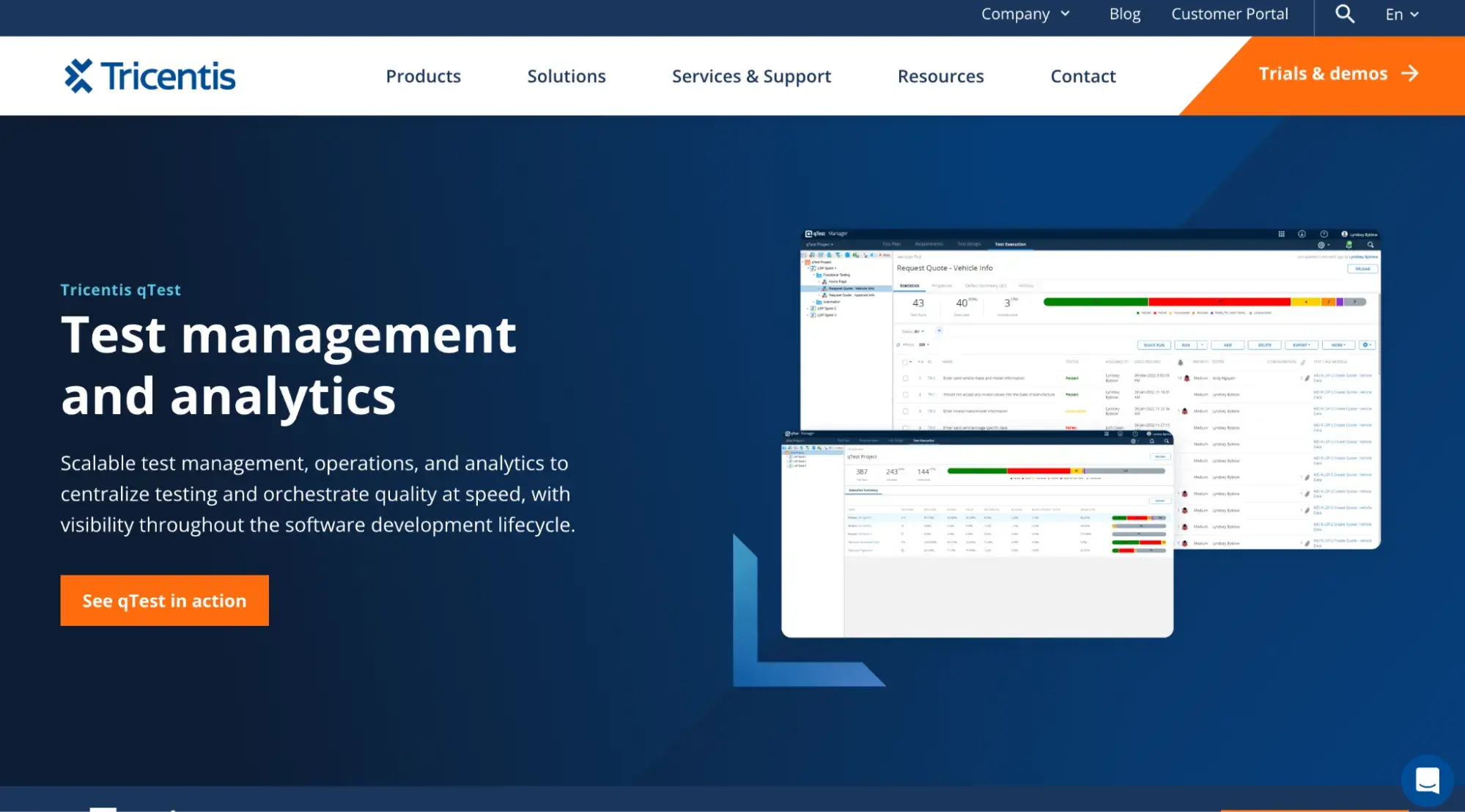
Tricentis qTest is a test management and execution solution designed to accelerate the software testing processes. When testing applications, it's critical to stay specific and organized. This is where qTest comes in handy.
I tested the application out, and I could create a test plan, specify requirements for each test case, and add links where a specific file or spreadsheet was needed to run the test.
My favorite feature in qTest is the defect log. When I ran into an unexpected result from a test, I detailed my exact steps and documented what happened versus what was expected.
Documentation is essential when you are working with a cross-functional team. QA engineers can assign defects to developers directly. This feature accelerates the bug-fixing process and reduces turnaround time.
Pricing: Tricentis qTest pricing isn't public. If you want this solution, you can request a demo and pricing from their team.
3. BrowserStack
BrowserStack is a cool tool that allows QA engineers and developers to test their websites and mobile applications across various browsers, operating systems, and mobile devices.
Before stumbling upon Browserstack, I used Chrome Dev tools to check the responsiveness of my application. While Chrome Dev is still a great tool, Browserstack allows me to test more environments in one setting, like Edge or Safari.
This tutorial will show you how I tested Hubspot’s website using Browserstack.
First, I chose the Live option, which allows testing across multiple browsers. The free trial has a limited-time session, so I could only test on Safari version 17.3.
Next, I entered the URL for HubSpot’s website and clicked Let’s Go.
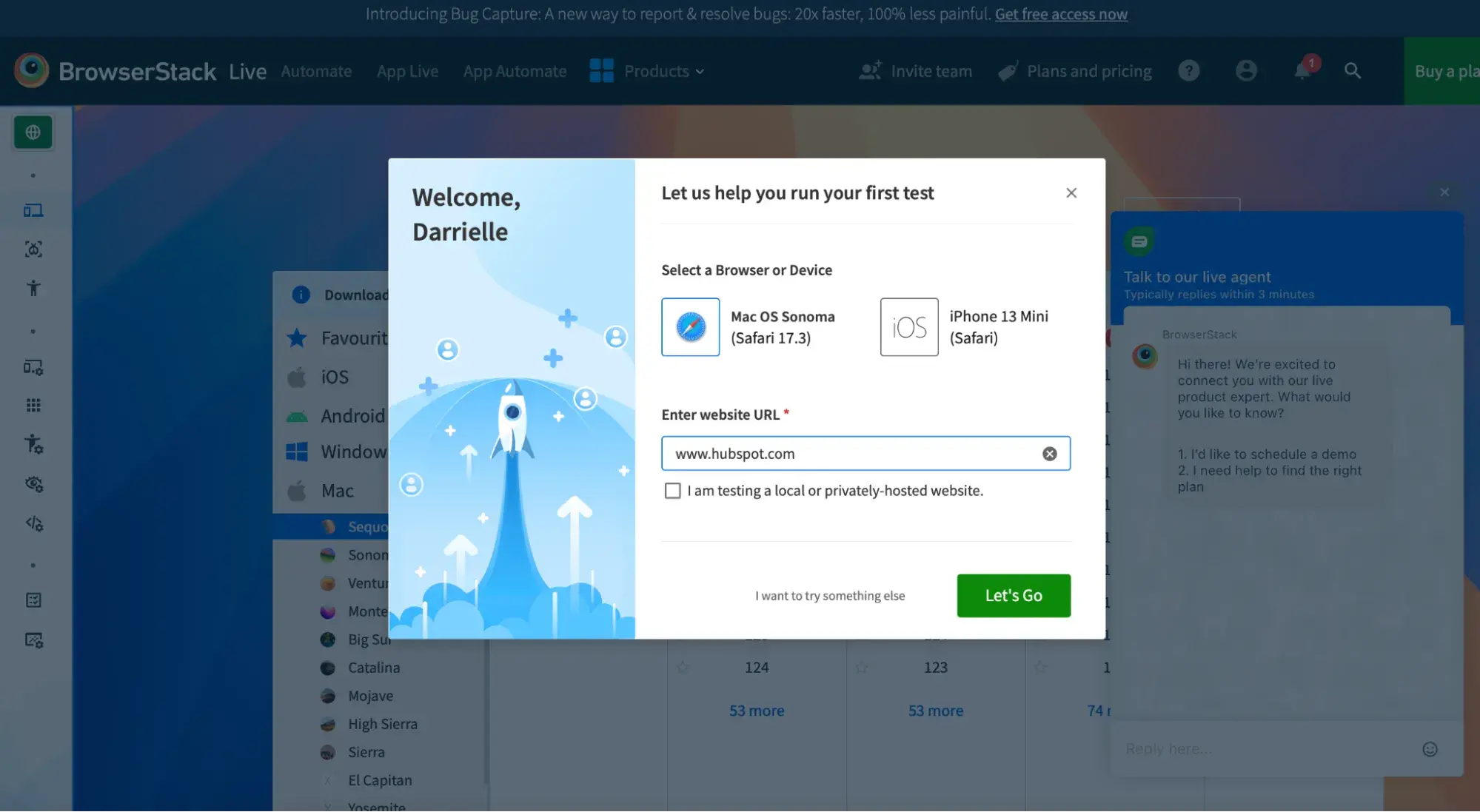
I enjoyed their UI and how it literally simulates a Safari experience. This is helpful because browsers react to certain functionalities differently, so using this tool to test is a great way to catch these errors before they happen.
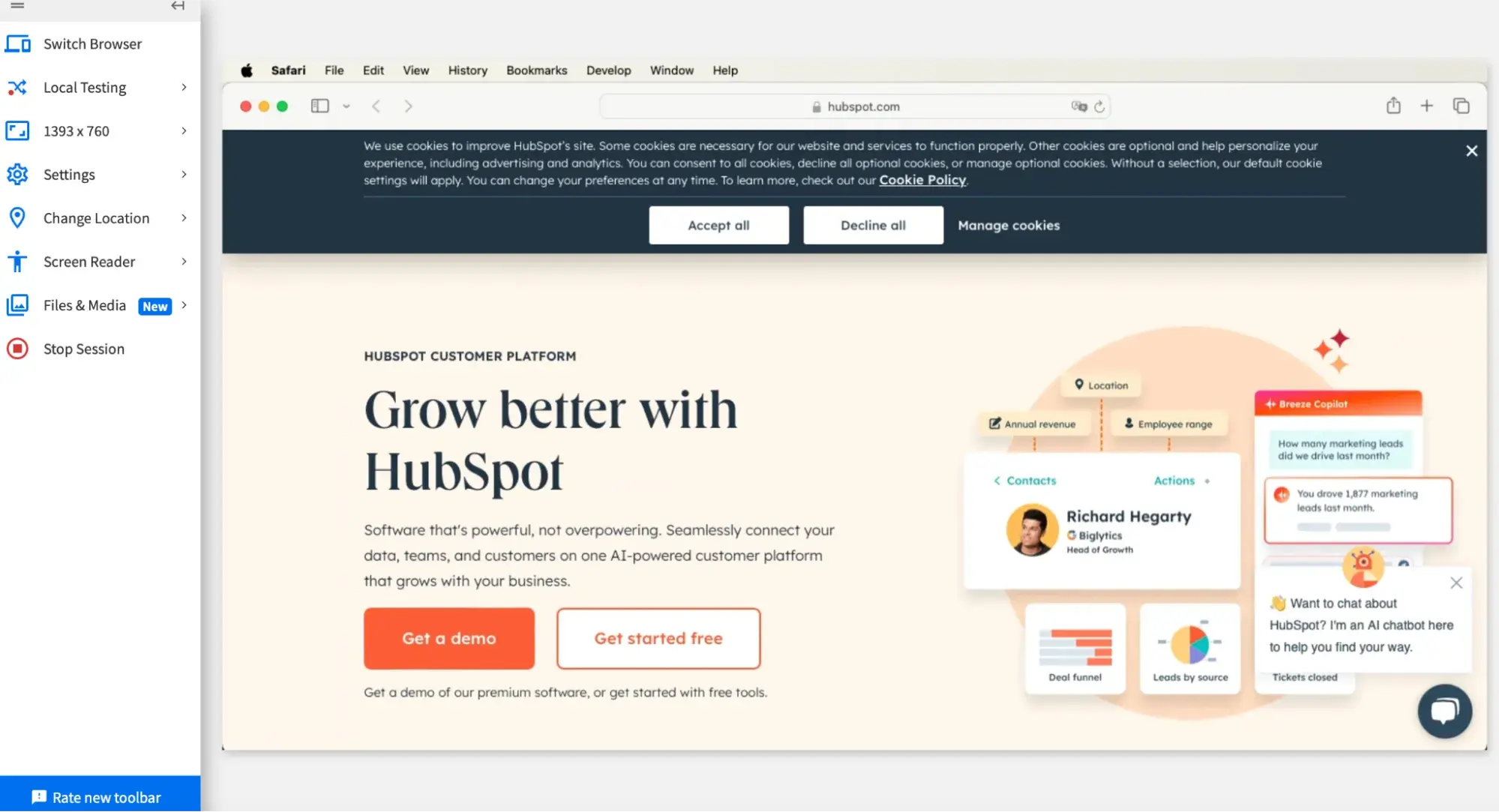
For this test, I focused on testing the chat feature, and verifying the accuracy of responses and the quality of the user interface.
As we both can see from my screenshot, the chat is responding to prompts appropriately and it UI is intact.
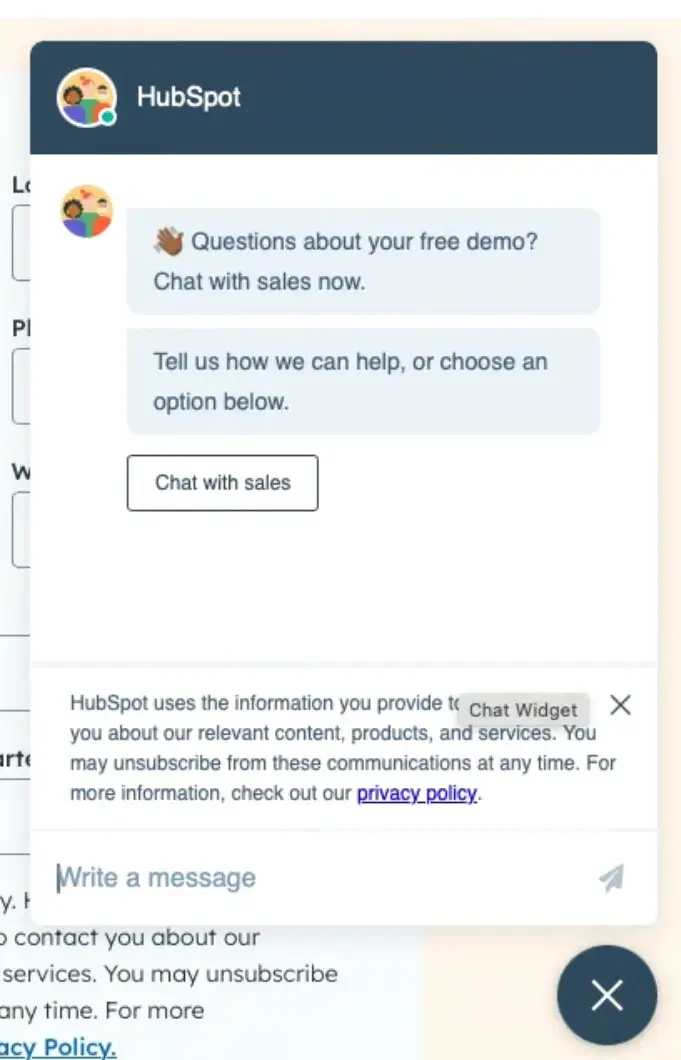
Pricing: While Browserstack does have a free version, it is very limited. You are only allowed one minute to test your application during the free trial. But they do offer a Mobile Lite plan with unlimited testing minutes, responsive testing, and bulk screenshot testing.
If you want access to features like their dev debugging tools or all Mac and Windows versions, consider upgrading to their Mobile and Desktop Max plan, billed at $29 a month.
If you have a large team and are looking for collaborative tools or geolocations in multiple countries, consider investing in their Team plan, which is $150 a month. For customized plans, contact their team to discuss their enterprise options.
4. Microsoft SQL Server Data Tools
Microsoft SQL Server Data Tools is a set of Visual Studio development tools used for database development. When developing applications, the information being processed and returned must be reliable. This is because accurate data is the backbone of reliable applications. Data validation and testing help QA engineers ensure data integrity and prevent errors.
Luckily, SQL Serva Data Tools offers a feature allowing developers and QA engineers to validate data. My previous article mentioned how I developed an apartment comparison application. I used SQL Server Data Tools (SSDT) to make sure my data was accurate and reliable. I utilized data profiling features to identify and correct errors, such as missing values, duplicates, and invalid formats. Additionally, I wrote unit tests to verify the correctness of stored procedures and functions responsible for data retrieval and comparisons. By testing how my application managed and used the data, I could confidently rely on the tool to accurately compare apartment information against my specified preferences.
Pricing: If you have an application where you want to test your data, you can download the Microsoft SQL Server Data tools for free. You can also check out this video to learn how to install these tools on your machine.
https://www.youtube.com/watch?v=jFOG3ZfMAZg
Quality Testing My Website
I recently revamped my portfolio using a bootstrap template to sharpen my digital presence.
However, it would do my professional brand a disservice if I didn’t ensure that my site was 100% functional and error-free.
So, in this section, I will show you exactly how I tested my own webpage.
First, I did a content audit.
Since my webpage represents my professional brand, having comprehensive, correctly spelled content is super important.
One of my favorite tools to use is the webpage spell checker extension which can be accessed in the Chrome Web store.
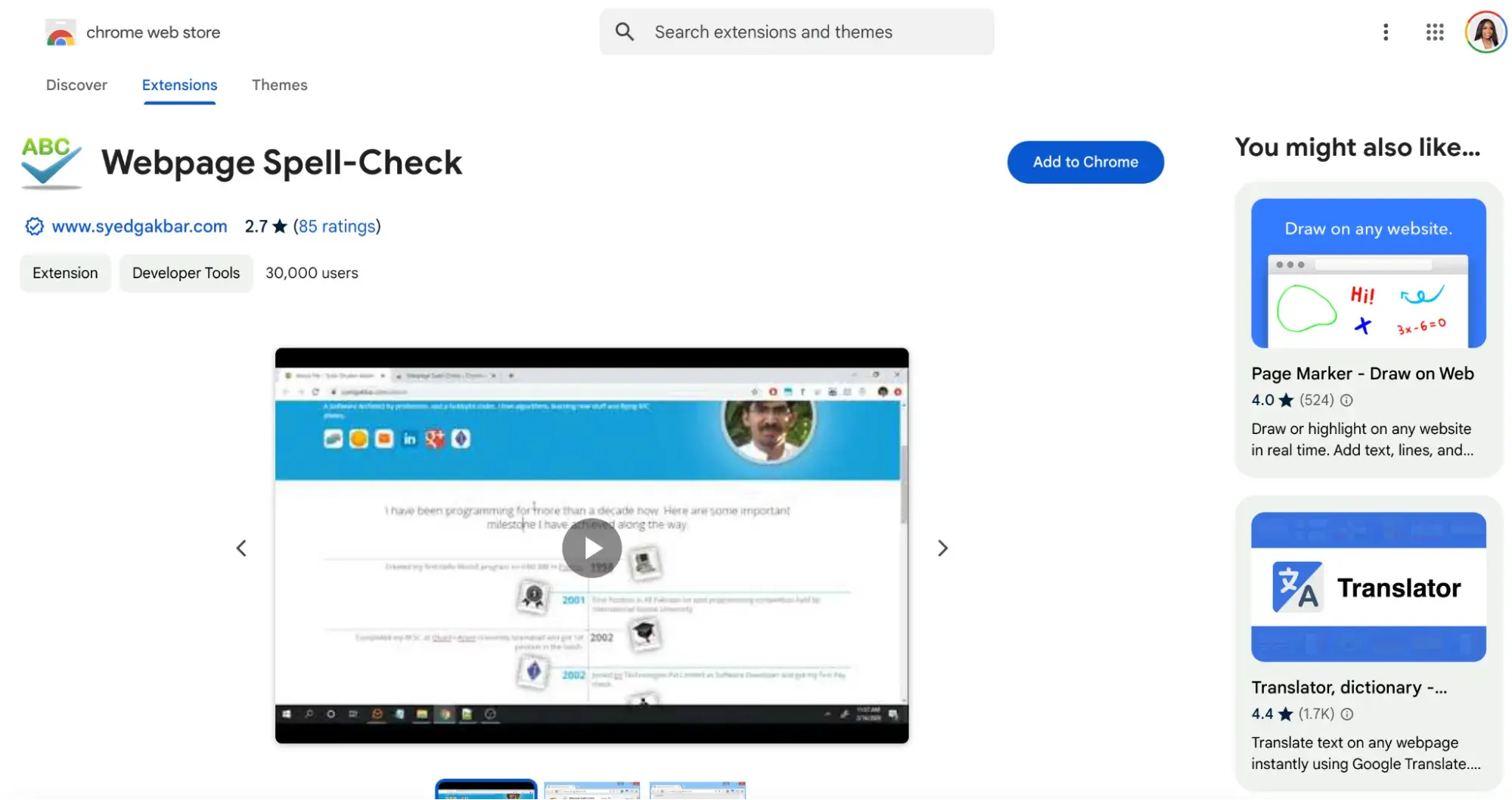
To use this tool, I clicked Add to Chrome to get access to the extension. Next, I adjusted my settings to automatically check the spelling on all web pages.
After I had all my settings selected, I navigated to my webpage.
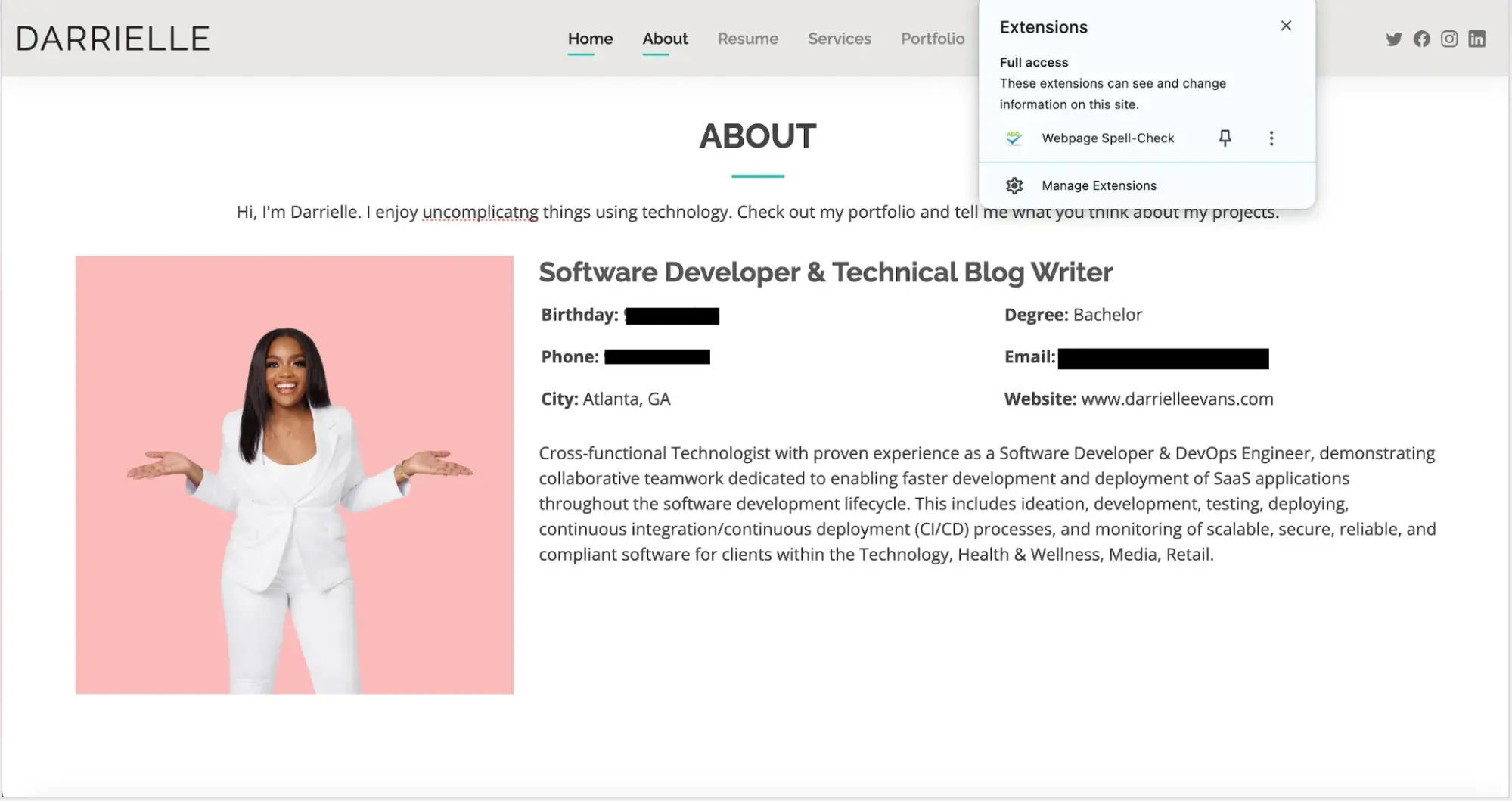
Whoops! I made a mistake and spelled “uncomplicating” incorrectly, which I can tell by the red underline. Thanks to this tool, I can quickly make changes in my code and present error-free content to my visitors.
Next, I did extensive link testing.
There are way too many tools on the web for this to have broken links on my webpage.
My go-to tool is the Dr Link Check. I simply put in my URL and it tells me if I have any broken links on my site. Luckily, in this case I don’t.
If I didn’t want to use a tool to do this. I could also manually click each link on my site to make sure that they direct to the proper page.
Pro tip: The ultimate testing solution, in my opinion, is to do both a tool and manual link check.
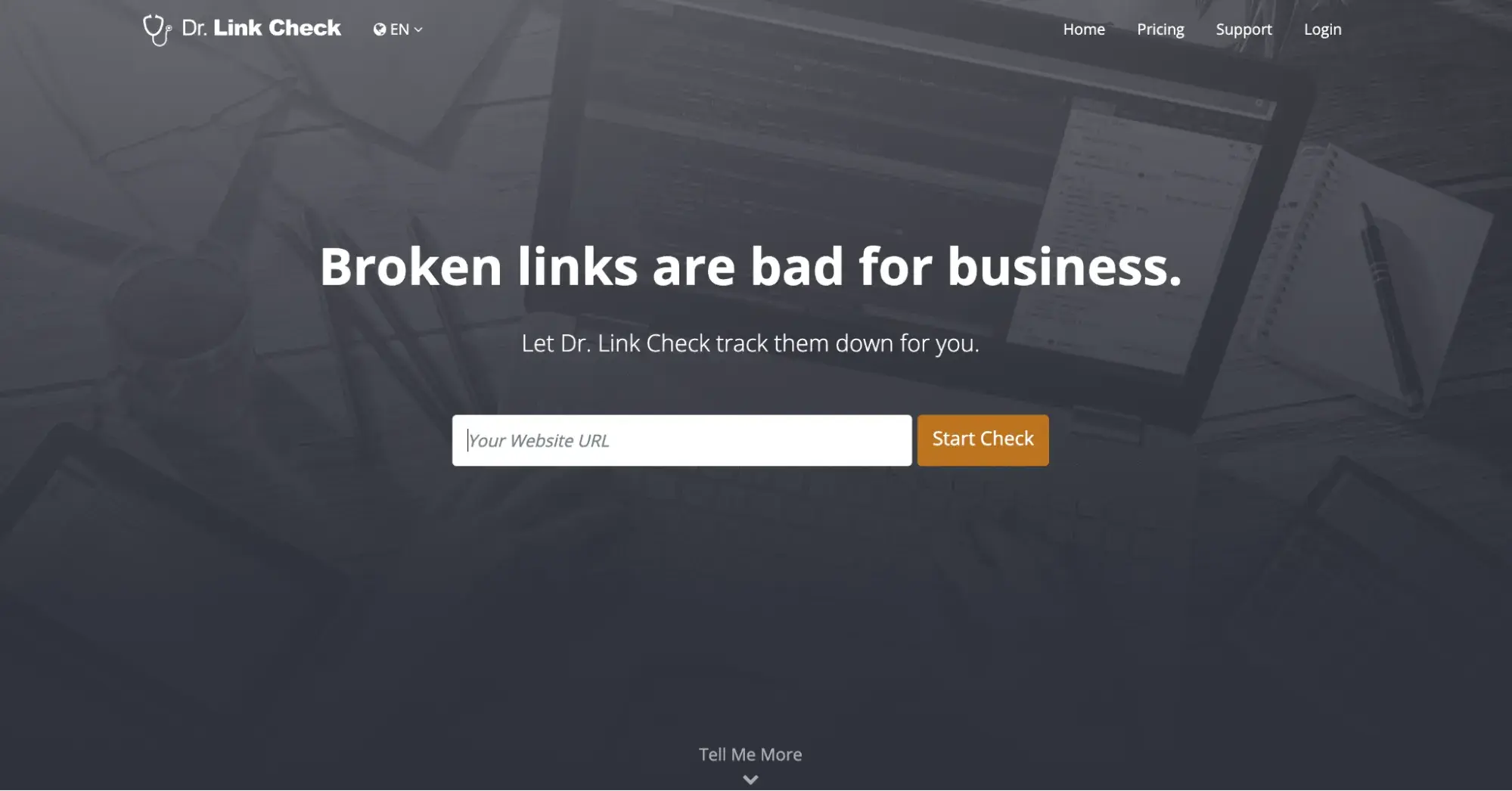
Finally, I did the necessary UI testing.
While my site isn’t content-heavy, I wanted to ensure that my few animations throughout are running properly.
On my homepage, I have a fade-in animation when the page initially loads. I also have an active bar that shows the user what page they are currently on in the nav bar.
I tested out my UI to make sure their functionality is working as expected. Check out the GIF below to see them in action.
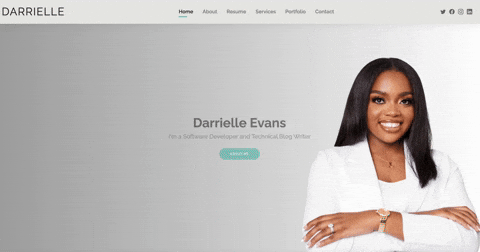
These are just a few of the steps I took to QA my site. If I detailed all of the steps, this post would be way too long. I recommend running through my checklist above and also checking out HubSpot’s website optimization checklist.
Quality assurance is a must.
While I have experience with testing as a developer, I was excited to discover the unique perspective of QA engineers. While we both use tools like BrowserStack, our approaches and priorities differ. But ultimately, our shared goal is to deliver a fully functional and optimized application that provides the best user experience possible.
Be sure you don’t de-prioritize the crucial testing stage as you develop your website. QA testing is essential to protecting your investment and ensuring its long-term success.
Website Performance


.png)


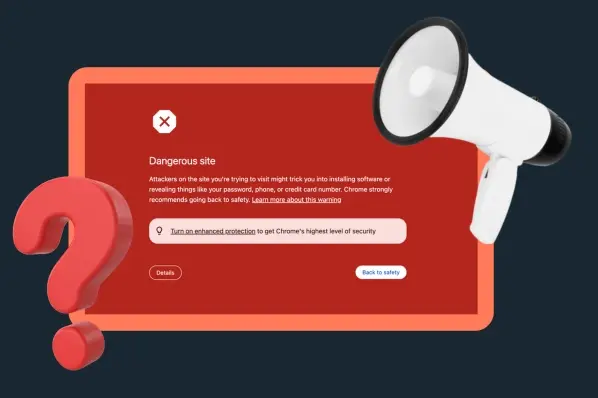

![7 Site Performance Challenges That Will Hold Businesses Back [Data + Expert Predictions]](https://53.fs1.hubspotusercontent-na1.net/hubfs/53/how-to-improve-lcp-1-20250121-126295.webp)



![19 Website Speed Optimization Strategies for 2024 [New Data]](https://53.fs1.hubspotusercontent-na1.net/hubfs/53/how-to-optimize-website-speed-1-20241203-1468927.webp)
